 Most viewed - KANAGAWA 神奈川県 Most viewed - KANAGAWA 神奈川県 |
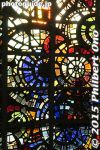
49 views
|
|

49 views
|
|

49 views
|
|

49 views
|
|
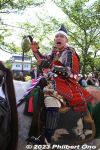
The fifth Odawara Castle Hojo lord, Hojo Ujinao played by Yanagisawa Shingo who is another Odawara Hometown Ambassador. 五代氏直 (柳沢慎吾)49 views
|
|

Museum floor plan.48 views
|
|

Station ticket office, recreating the old Takatsu Station.48 views
|
|

Rubber stamps to stamp destinations on blank train tickets.48 views
|
|

48 views
|
|

YS-11 prop plane cockpit.48 views
|
|

YS-11 prop plane cockpit.48 views
|
|
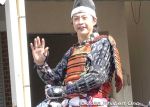
The first Odawara Hojo lord, Hōjō Sōun played by actor Goda Masashi. 初代北条早雲 (合田 雅)48 views
|
|

Entrance to Train and Bus Museum.47 views
|
|

47 views
|
|

Train tickets before vending machines.47 views
|
|

Inide bus47 views
|
|

47 views
|
|

Event Hall, now called Hall B.47 views
|
|

47 views
|
|

YS-11 prop plane cockpit.47 views
|
|

Operated by Tokyu, Train and Bus Museum in Kawasaki is a medium-size museum near Miyazaki-dai Station on the Tokyu Den-en-toshi Line connected to Shibuya. 46 views
|
|

Path to the museum.46 views
|
|

Path to the museum has historical photos of Tokyu trains and buses.46 views
|
|

Semi-trailer bus from 1948.46 views
|
|

Entrance to museum through this turnstile.46 views
|
|

46 views
|
|

46 views
|
|

History of Tokyu railway lines.46 views
|
|

46 views
|
|

46 views
|
|

Kamata Station model.46 views
|
|

Tokyu train in 1980.45 views
|
|

45 views
|
|

45 views
|
|

Train tickets before vending machines.45 views
|
|

Ticket machine45 views
|
|

Commemmorative tickets.45 views
|
|

45 views
|
|

45 views
|
|

Model train diorama.45 views
|
|

Station staff articles45 views
|
|

45 views
|
|

Tokyu train in 1975.44 views
|
|

44 views
|
|

44 views
|
|

44 views
|
|

44 views
|
|

44 views
|
|

Tokyu bus44 views
|
|

Train simulators.44 views
|
|

Station staff articles44 views
|
|

Museum ticket vending machine.43 views
|
|
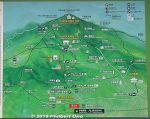
Mt. Oyama has roads, hiking paths, and a cable car going up the mountain. The main road (accessible by bus) goes up through a valley on the mountain until it reaches near the cable car station.41 viewsMost people only go halfway (elevation 700 meters) up the mountain to Oyama Afuri Shrine's Shimosha (Lower Shrine). People wanting a more challenging trek can hike to the summit to visit the Honsha main shrine. Mt. Oyama is 1,252-meters high (4,108 ft) and part of the Tanzawa Mountains.
|
|

39 views
|
|

38 views
|
|
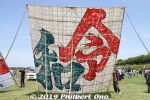
37 views
|
|
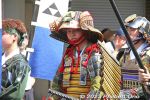
Hōjō Choko (Gen'an), second and youngest son of Hōjō Sōun. 北条長綱隊 国際医療福祉大学37 views
|
|
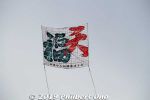
36 views
|
|
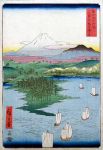
Mt. Oyama appears in quite a few ukiyoe prints usually along with nearby Mt. Fuji. This one is by Hiroshige in 1858 as seen from Yokohama. Image courtesy of 神奈川県郷土資料アーカイブ.36 views
|
|
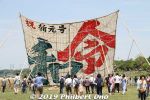
35 views
|
|
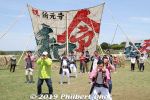
35 views
|
|
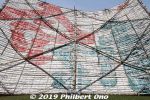
35 views
|
|
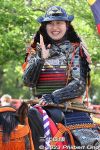
The third Odawara Castle lord, Hojo Ujiyasu played by a woman. Trotting past Odawara Castle. 三代北条氏康隊35 views
|
|
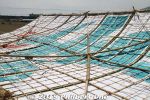
34 views
|
|
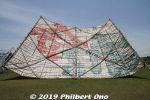
34 views
|
|
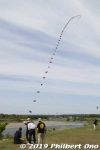
34 views
|
|
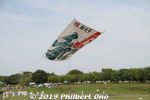
34 views
|
|
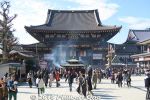
Belonging to the Shingon Buddhist sect founded by Kobo Daishi, Kawasaki Daishi Temple is one of the Kanto Region's Big Three Shingon temples (other two being Narita-san in Chiba and Yakuoin in Mt. Takao).34 viewsOfficially named Heikenji Temple, Kawasaki Daishi worships Kobo Daishi (弘法大師), the founder of the Shingon Sect.
|
|

Statue of Shaka Nyorai in the Kyozo.34 views
|
|
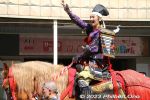
The fourth Odawara Castle lord, Hojo Ujimasa played by well-known actor Takashima Masanobu. 四代氏政 (高嶋政伸)34 views
|
|
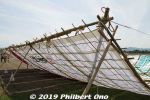
33 views
|
|
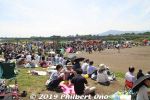
33 views
|
|
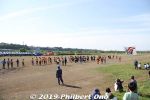
33 views
|
|
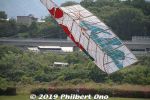
33 views
|
|
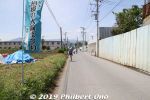
Held annually on May 4 and 5 along the Sagami River from 10 am to 4 pm. Nearest train station is Sobudaishita Station on the JR Sagami Line (20-min. walk to the festival site). They have shuttle buses from the train station to festival site, but I walked.33 views
|
|
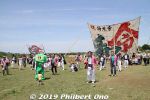
33 views
|
|
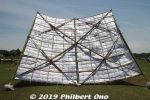
33 views
|
|
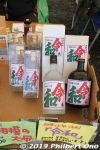
33 views
|
|
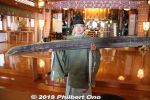
Oyama Afuri Shrine priest Kunihiko Meguro showed us a large wooden sword that was offered to the shrine by a pilgrimage group in 1905. (大山阿夫利神社).33 viewsThe tradition of bringing and offering a sword by pilgrimage groups started with Kamakura-based Shogun Minamoto no Yoritomo (1147–1199) who offered a sword to the shrine to pray for the defeat of his enemy, the Taira Clan. The offered swords got as big as 6 meters long made of wood.
|
|
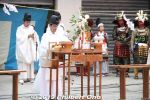
Food offerings for the arriving deity.33 views
|
|
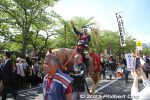
The fourth Odawara Castle lord, Hojo Ujimasa played by well-known actor Takashima Masanobu. 四代氏政 (高嶋政伸)33 views
|
|
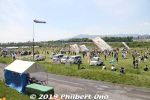
The site is a riverside park. They fly the giant kite a few times each day depending on the wind. Photos were taken on May 5, 2019.32 views
|
|
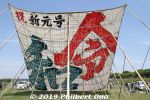
In May 2019, the giant kite celebrated the new Reiwa Era by having the kanji characters for Reiwa on the giant kite.32 views
|
|
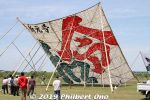
32 views
|
|
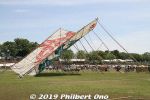
32 views
|
|
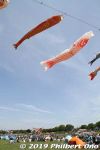
32 views
|
|
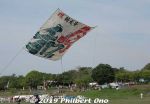
32 views
|
|

Local Oyama beer. The local sake is also good because of the good water.32 views
|
|
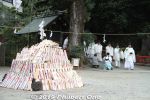
Wooden prayer tablets for a bon fire.32 views
|
|
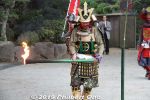
Before it got dark, some people dressed as samurai arrived near the Noh stage with sacred fire torches.32 views
|
|
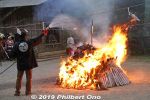
32 views
|
|
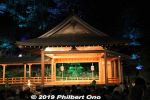
The Noh tradition on Oyama was disrupted due to the Great Kanto Earthquake in 1923 and World War II, but it was resurrected in the 1980s.32 viewsThe background trees were also beautifully illuminated. Also notice the small torches. Starting at 4 pm, four plays including a dance and kyogen were performed. Ended at 7:30 pm. They also had a beautiful bilingual (Japanese and English) program explaining much about the Oyama, Afuri Shrine, and Noh.
|
|
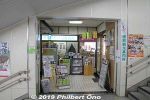
When going down the stairs at Isehara Station's North Exit, you can drop by this tourist information office to pick up brochures.32 views
|
|
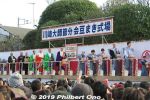
Kawasaki Daishi has about 70 people throwing beans each time, so a total of 210 people for the day. ¥70,000 x 210 = ¥14,700,000 income for the temple this day.32 views
|
|
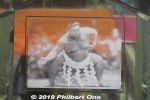
Photo of Kitanoumi as yokozuna.32 views
|
|
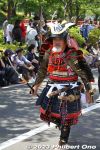
Very elaborate handmade samurai armor and costume. Odawara, Kanagawa.32 views
|
|
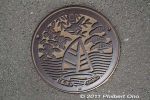
Hayama, Kanagawa manhole32 views
|
|
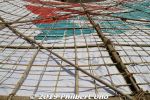
31 views
|
|
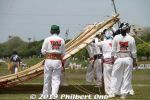
31 views
|
|
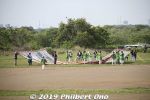
31 views
|
|
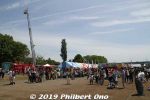
31 views
|
|
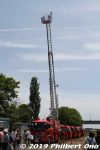
31 views
|
|
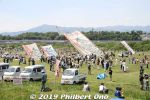
31 views
|
|
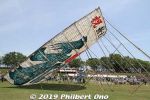
31 views
|
|
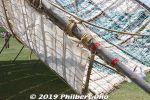
31 views
|
|
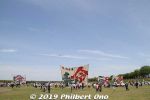
31 views
|
|

31 views
|
|
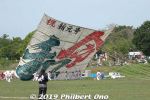
31 views
|
|

31 views
|
|

31 views
|
|

Foot bath with a view of Lake Ashi at Hakone Ashinoko Hanaori hotel.31 views
|
|
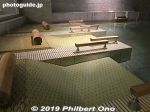
Outdoor hot spring bath at Hakone Ashinoko Hanaori hotel.31 views
|
|

Hakone Ashinoko Hanaori hotel lobby with a ukiyoe mural of Hakone Pass.31 views
|
|
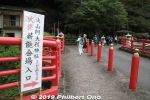
Way to the Takigi Noh venue.31 views
|
|
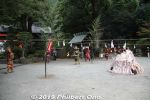
Entrance of the sacred fire that was created in the Haiden in the early morning.31 views
|
|
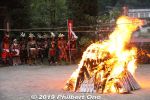
Bon fire burned until it got dark. The sacred fire was also used to light the torches near the Noh stage.31 views
|
|
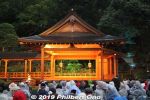
Torches near the Noh stage were also lit. Noh started on Mt. Oyama 300 years ago when the shogun ordered the conflicting religious groups on the mountain to work together to stage a Noh play twice a year. 31 viewsThis was to prevent fighting from breaking out on the mountain. Priests in those days were armed and warrior-like. The strategy worked as Oyama's Shintoists, Buddhists, and ascetic priests made peace and worked together to perform Noh in the Kanze School.
|
|
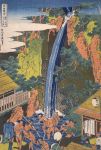
Ukiyoe print of Roben Falls used by Oyama pilgrims to purify themselves. Notice the long wooden swords.31 views
|
|
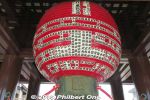
Behind the giant paper lantern.31 views
|
|

Kawasaki Daishi Temple, Dai-hondo main worship hall 大本堂31 views
|
|

31 views
|
|
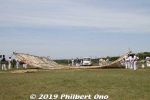
30 views
|
|
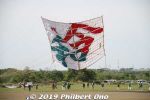
In May 2019, the giant kite celebrated the new Reiwa Era by having the kanji characters for Reiwa on the giant Zama kite.30 views
|
|
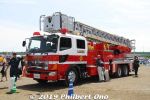
30 views
|
|
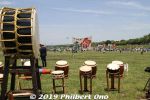
30 views
|
|
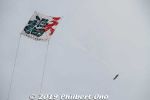
30 views
|
|
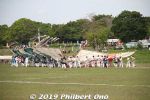
30 views
|
|

30 views
|
|

Mt. Oyama in Isehara, Kanagawa is about halfway to Hakone near Mt. Fuji. Easy day trip from Tokyo. During the Edo Period (1603–1867), Mt. Oyama was very popular for pilgrimages by the fun-loving masses in Edo/Tokyo.30 viewsIt had many shrines and temples and mountain ascetic priests. When Edo/Tokyo's pop. was 1 million, Oyama saw 200,000 pilgrims per year. Today, there are fewer shrines and temples and pilgrims, but it's still a pleasant place to visit and less crowded than more well-known spots. The main attractions are Oyama Afuri Shrine and Oyama-dera Temple.
From Shinjuku, take the Odakyu Line to Isehara Station (about 1 hour). Get out the North Exit, and go to bus stop 4 to take the bus to the Oyama Cable stop. Google Map to Mt. Oyama
|
|
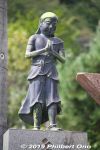
Statue from Oyama-dera Temple greeting worshippers.30 views
|
|

Entrance to Negishi Ryokan, one of many pilgrims' inns called "shukubo" where pilgrims would stay. During the Edo Period, Oyama had hundreds of pilgrims' inns, but now only about 40+ remain. 根岸旅館30 viewsShukubo lodging rates start from ¥10,000 per person per night including dinner and breakfast. To search for a shukubo on Oyama, see http://ooyama-ryokan.com/english/index.html
|
|
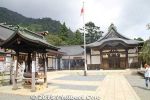
30 views
|
|
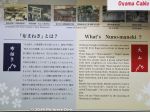
About Nuno-maneki banners.30 views
|
|

About Roben Falls where ascetic Buddhist Priest Roben first bathed and founded Oyama-dera Temple in 755. Roben also had a hand in founding the famous Todaiji Temple in Nara that houses the giant Buddha and Ishiyama-dera Temple in Otsu, Shiga..30 views
|
|
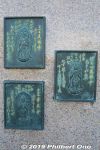
Japan's 100 Kannon Buddhas in relief. 30 views
|
|
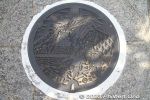
Odawara manhole with Odawara Castle.30 views
|
|
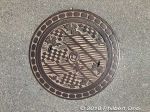
Manhole in Zushi, Kanagawa.30 views
|
|
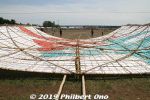
29 views
|
|
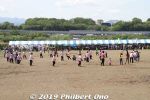
29 views
|
|
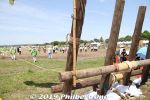
29 views
|
|

29 views
|
|
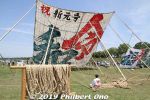
29 views
|
|
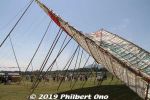
29 views
|
|

Hakone Ashinoko Hanaori hotel 29 views
|
|
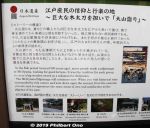
Mt. Oyama once had so many pilgrims that several roads from Tokyo (Edo) and surrounding areas leading to Oyama were dubbed "Oyama-do Road" (大山道).29 viewsThe road named Aoyama-dori Oyama Road started from Akasaka and passed through Sangenjaya (Three Teahouses). Sangenjaya originally had only two teahouses serving pilgrims going to Oyama. A third teahouse was added to serve the many Oyama pilgrims and that's how Sangenjaya got its name.
|
|
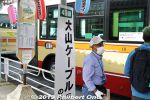
From Isehara Station's North Exit, go to bus stop 4 and take the bus going to Oyama Cable bus stop, taking about 30 min.29 views
|
|
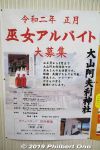
Poster to recruit omiko shrine maidens for New Year's 2020. They won't get paid much. ¥1,020/hour.29 views
|
|
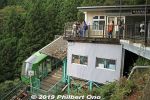
After about 6 min., we reached Afuri Jinja Station, the last stop.29 views
|
|
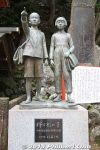
Children's monument from the city of Kawasaki.29 views
|
|

Steps to the Honsha main shrine on the mountaintop. From here, it's about a 90-min. hike to the Honsha main shrine on the summit.29 views
|
|
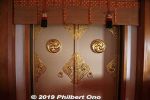
29 views
|
|
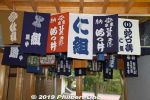
Nuno-maneki banners.29 views
|
|
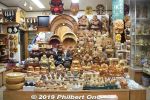
We walked back down the Koma-sando steps.29 views
|
|
|
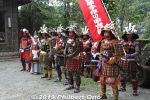
29 views
|
|
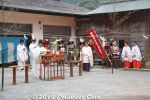
29 views
|
|

For Oyama Afuri Shrine's 39th Fire Festival Takigi Noh on Oct. 3, 2019, a Kyogen play called "Neongyoku" and Noh play called "Momojigari" were performed.29 viewsPerformers were top class from the Kanze School of Noh and the Okura School of Kyogen. Sorry, but photography of the performances wasn't allowed so I don't have photos of the performances. Many thanks to Alice Gordenker who organized the tour and provided English explanations.
|
|
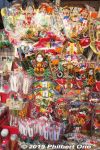
29 views
|
|
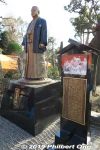
Statue of the late sumo wrestler Yokozuna Kitanoumi (1953–2015) as the chairman of the Japan Sumo Association. He was a member of Kawasaki Daishi Temple.. 29 views
|
|
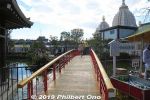
Crossing Yasuragi Bridge over Tsuru-no-Ike Pond. やすらぎ橋29 views
|
|
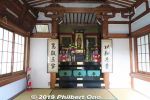
Inside Shotoku Taishi-do Hall dedicated to Prince Shotoku Taishi. 聖徳太子堂29 views
|
|
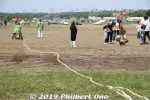
28 views
|
|
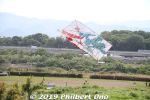
28 views
|
|
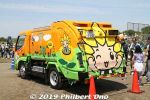
28 views
|
|
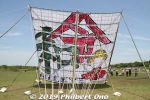
28 views
|
|
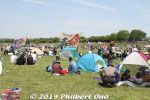
28 views
|
|

One easy way to explore Mt. Oyama: 1. From Isehara Station Kitaguchi (North Exit), go to bus stop 4 and take a bus for Oyama Cable (30 min). 28 views2. From the bus stop, walk up the Koma-sando path to Oyama Cable Station (20 min.).
3. Take the Oyama Cable car to Afuri Jinja Station. (6 min.).
4. Visit Oyama Afuri Shrine Shimosha.
5. Take the Oyama Cable car back down. If you want, get off at Oyama-dera Station to visit Oyama-dera Temple.
6. From Oyama Cable Station, walk back down the Koma-sando path to Oyama Cable bus stop for the bus back to Isehara Station.
|
|
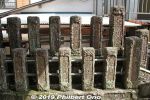
Pilgrimage groups formed among neighborhoods and occupations and they sent delegations to Oyama every year to pray on the group's behalf. It took 2 to 3 days to walk from Edo/Tokyo.28 viewsMt. Oyama became a destination for fun besides religion. Along the Koma-sando, you can see these many stone monuments and plaques engraved with the names of pilgrims and pilgrimage groups who worshipped on Oyama. Lots of names everywhere on this mountain.
|
|

More steps. Just walk up at a leisurely pace.28 views
|
|

More names of pilgrims.28 views
|
|
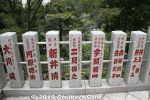
Stone markers engraved with names of shrine donors and their locale.28 views
|
|
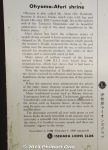
About Afuri Shrine.28 views
|
|
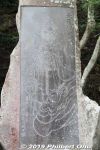
O-tengu goblin monument. 大天狗28 views
|
|

Entrance to the hiking path to the Honsha main shrine on Mt. Oyama's summit. Takes about 2 hours to reach the summit. Steep and rocky trail. 登拝門28 views
|
|
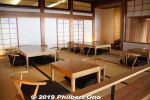
Afuri Shrine's cafe named Sekison, the indoor dining room. Open 9:30 am–4 pm. 石尊28 views
|
|
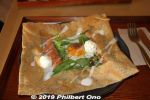
Galette for lunch. (ガレット)28 views
|
|
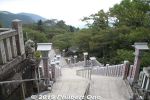
Steps back down. Mt. Oyama has Oyama-dera and a few other notable spots, but we didn't have time to visit them this day.28 views
|
|

Oyama Cable Station.28 views
|
|
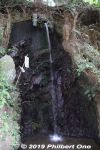
Roben Falls. During the Edo Period, pilgrims would bathe under these falls for purification. Roben Falls was made famous by woodblock prints showing tattooed pilgrims bathing here. 良弁滝28 views
|
|
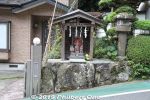
Roadside shrine for Fudo Myo-o.28 views
|
|
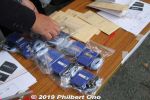
Audio guide for English interpreting.28 views
|
|
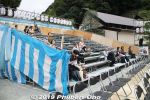
Bleachers.28 views
|
|
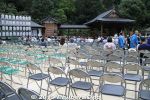
Cheap seats were ¥1,500.28 views
|
|
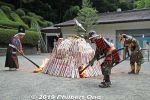
28 views
|
|
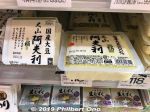
Afuri tofu in a supermarket in Tokyo.28 views
|
|
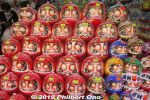
Daruma with eyes to be painted in.28 views
|
|
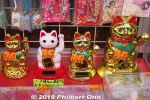
Beckoning cats or maneki-neko.28 views
|
|
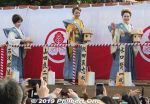
Kanda Uno (center) and Dewi Sukarno (right) were the main celebrities throwing beans. They weren't born in the Year of the Boar, but Uno is a native of Kawasaki. Dewi must also have some connection with this temple or Kawasaki. 28 views
|
|

About the Kyozo Sutra Repository. (経蔵)28 views
|
|
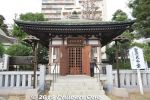
Shotoku Taishi-do Hall dedicated to Prince Shotoku Taishi. 聖徳太子堂28 views
|
|
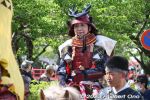
Hachioji Castle lord, Hojo Ujiteru played by a woman. 八王子城主 北条氏照隊28 views
|
|
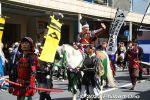
The fifth Odawara Castle Hojo lord, Hojo Ujinao played by Yanagisawa Shingo. 五代氏直 (柳沢慎吾)28 views
|
|
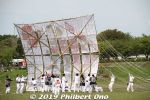
27 views
|
|
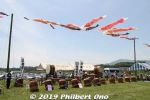
27 views
|
|

Buffet at Hakone Ashinoko Hanaori hotel.27 views
|
|
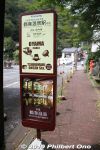
Got off the bus at the Oyama Cable bus stop and walk to the Koma-sando path nearby.27 views
|
|

Tops for sale.27 views
|
|
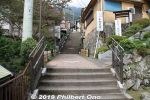
This path is not wheelchair accessible.27 views
|
|

There's only one station in-between where the trains going in opposite directions pass each other. This is Oyama-dera Station if you want to visit Oyama-dera Temple.27 views
|
|

Inside the Oyama Cable car.27 views
|
|
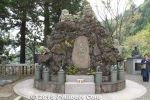
Oyama mountain of lions surrounded by animals from the Oriental zodiac. This is actually a large rock brought here from Mt. Fuji. Mt. Oyama's deity is the father of Mt. Fuji's goddess. 獅子山27 views
|
|
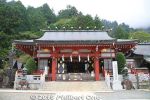
Oyama Afuri Shrine (大山阿夫利神社) Haiden prayer hall. The shrine was built to bring rain for agriculture. One of the gods enshrined is the father of Mt. Fuji's goddess. 27 views拝殿
|
|
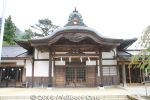
Kyakuden waiting room for worshippers. 客殿27 views
|
|
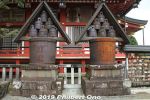
Huge monument that everyone stares at and wonder what it is. This sculpture of steel water buckets seems to be related to fire prevention, donated by people from Kawagoe, Saitama. 武蔵 川越27 views
|
|
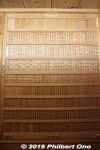
Names of shrine supporters.27 views
|
|
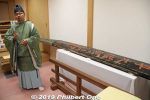
Oyama Afuri Shrine priest Kunihiko Meguro showed us a large wooden sword that was offered by a pilgrimage group.27 views
|
|
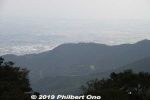
27 views
|
|
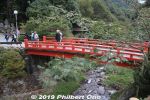
27 views
|
|
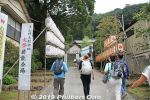
Way to Oyama Afuri Shrine's Noh stage at the Shamukyoku shrine office. 社務局27 views
|
|
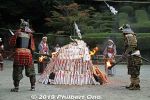
They lit the bon fire made of prayer tablets. This was the fire festival (火祭) part of the event.27 views
|
|
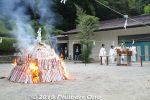
27 views
|
|
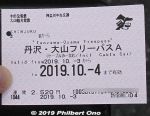
From Tokyo, take the Odakyu Line from Shinjuku Station to Isehara Station (about 60 min.). No need to take the Romance Car express train. The "Tanzawa-Oyama Free Pass A" is a good deal for a roundtrip, including bus and the cable car on Mt. Oyam27 viewsValid for 2 days and costs ¥2,520. If you prefer not to take the cable car and hike instead, buy "Tanzawa-Oyama Free Pass B" which is cheaper at ¥1,560. You can buy the pass at any Odakyu Line train station like Shinjuku, Machida, Yamato, and Isehara Stations. Use the ticket vending machine.
|
|

Ukiyoe print of pilgrims climbing Mt. Oyama. By Utagawa Yoshifuji in the 19th century. 歌川芳藤27 viewsDuring the Edo Period, Mt. Oyama was one of the first sacred sites that allowed pilgrimages by commoners. In the old days, making the trip to Oyama by oneself was too difficult, so they formed pilgrimage groups.
|
|
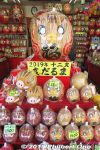
Daruma dolls.27 views
|
|
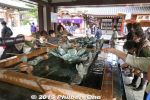
Water basin with a lotus flower.27 views
|
|
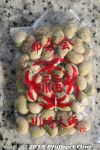
My lucky setsubun beans. It hit my hand in the air and I caught it. I think one of the priests threw it.27 views
|
|
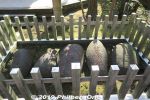
Power stones (chikara-ishi) 力石27 views
|
|
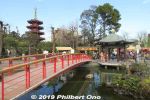
Yasuragi Bridge over Tsuru-no-Ike Pond. It dispels evil and brings good fortune. やすらぎ橋27 views
|
|
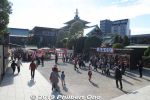
Ahead is the temple office and Shinto Kaikan (Followers Hall) on the right. 信徒会館27 views
|
|
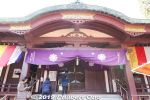
Fudodo Hall dedicated to Fudo Myo-o. 不動堂27 views
|
|
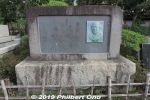
27 views
|
|
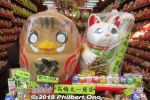
Boar daruma and beckoning maneki-neko cat.27 views
|
|
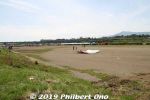
Zama Giant Kite Odako Festival is held annually on May 4 and 5 along the Sagami River from 10 am to 4 pm. They fly the giant kite a few times each day depending on the wind. 26 viewsNearest train station is Sobudaimae Station on the Odakyu Line. They have shuttle buses between the train station and festival site.
|
|
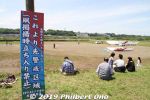
26 views
|
|
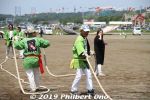
26 views
|
|
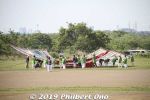
26 views
|
|
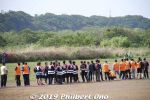
26 views
|
|
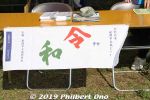
26 views
|
|
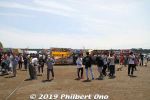
26 views
|
|
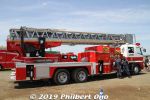
26 views
|
|
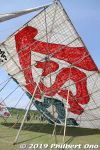
26 views
|
|
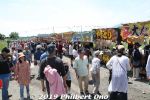
26 views
|
|

Near Togendai is Hakone Ashinoko Hanaori hotel with good views of Lake Ashi.26 views
|
|
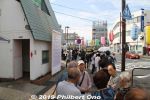
From Isehara Station's North Exit, there was this long line for the bus stop 4. Some people were going on a different bus, but we all got on the right bus.26 views
|
|
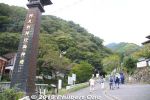
Entrance to the uphill Koma-sando path to Oyama Cable car station. 26 views
|
|

Tops on the Koma-sando path. "Koma" means "top."26 views
|
|
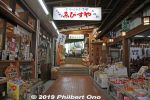
Souvenir shops.26 views
|
|
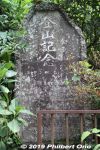
Pilgrimage monument.26 views
|
|
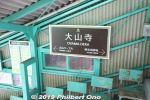
To visit Oyama-dera Buddhist Temple, get of at this station. (During this trip, we didn't visit Oyama-dera Temple, dedicated to Fudo Myo-o.)26 views
|
|
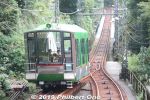
Passing loop at Oyama-dera Station.26 views
|
|
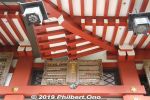
26 views
|
|
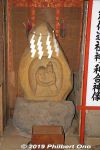
ぼけ封じ守護神26 views
|
|
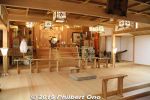
26 views
|
|
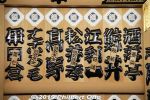
Names of worshippers who had tattoos. Their names also have labels describing their tattoos for ID purposes.26 views
|
|
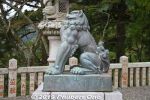
Lion statue at the shrine entrance.26 views
|
|
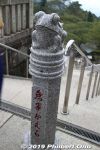
Frog for a safe return. "Kaeru"26 views
|
|

Plaque on "Tofu Road" where there were many tofu maker/sellers. Afuri tofu is famous because of Oyama's good water. Local inns started making tofu with the local water and the soybeans pilgrims brought as payment for lodging.26 views
|
|
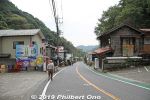
Walking down the main road.26 views
|
|
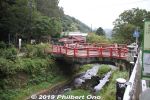
Bridge over Oyama River.26 views
|
|

Oyama Himatsuri Takigi Noh is held annually on two successive days in early Oct. It's an outdoor Noh play under firelight. This Noh tradition goes back 300 years. Saw it on Oct. 3, 2019. PR poster for Takigi Noh on Mt. Oyama.26 views
|
|
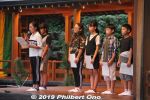
I was very impressed by their English. Very good explanation and excellent English coaching. Wish all festivals in Japan did this.26 views
|
|
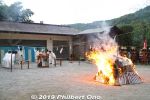
26 views
|
|
| 3523 files on 14 page(s) |
 |
 |
 |
12 |  |
|